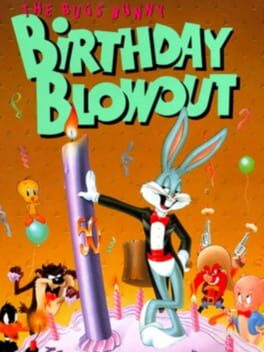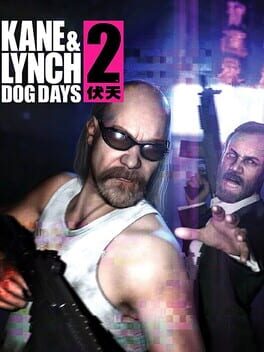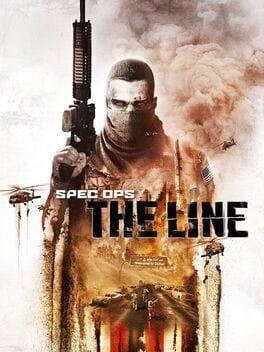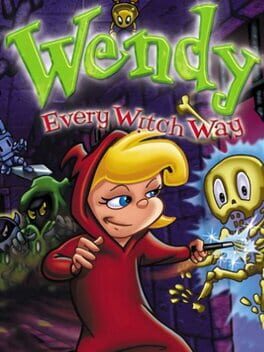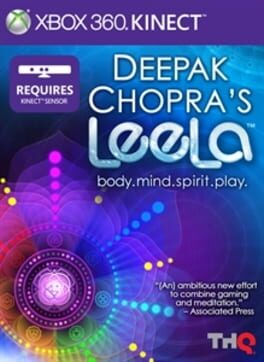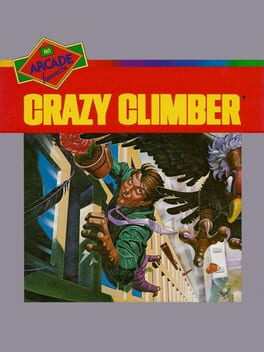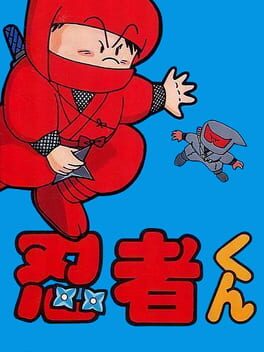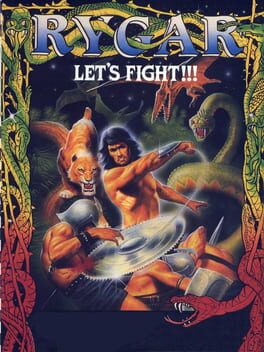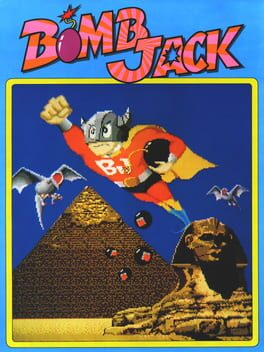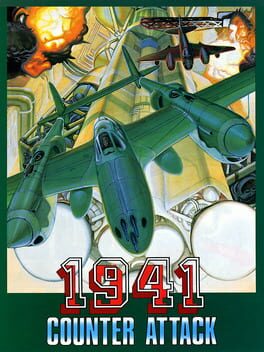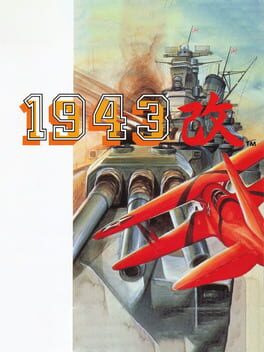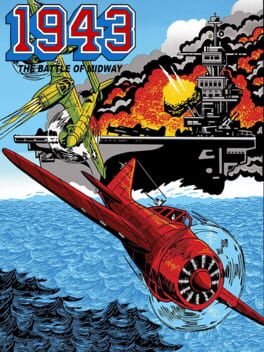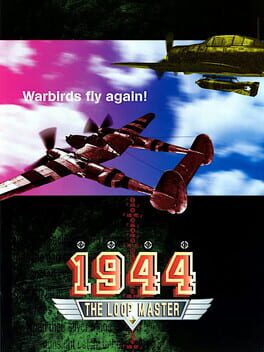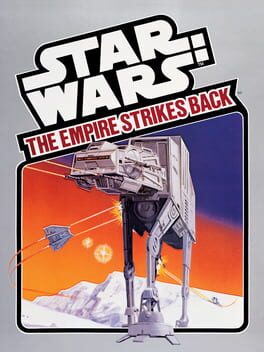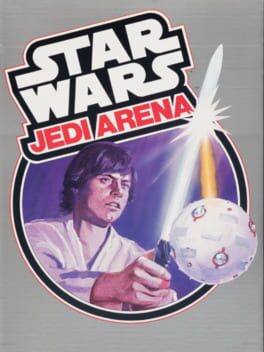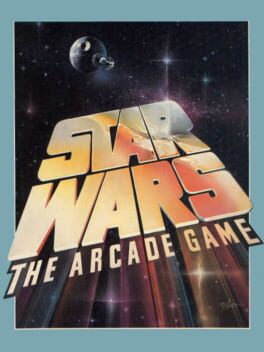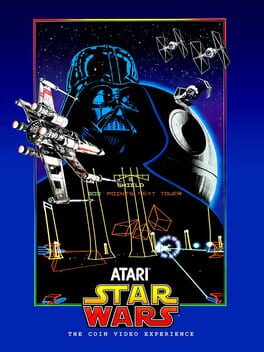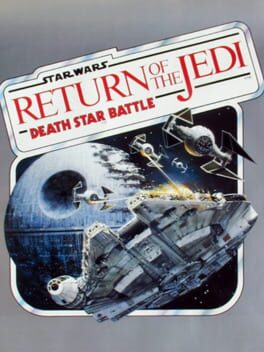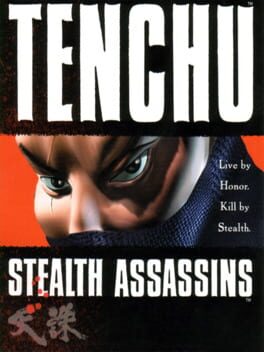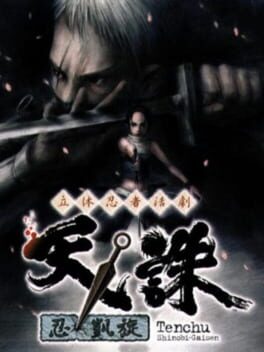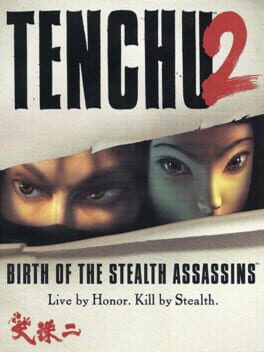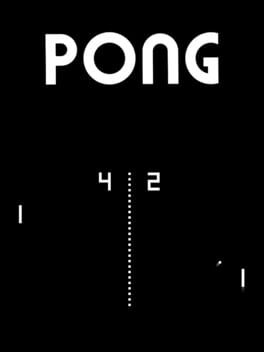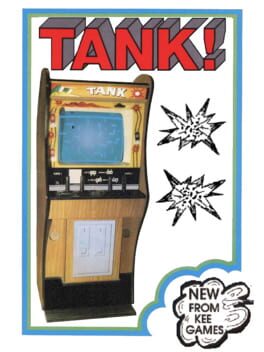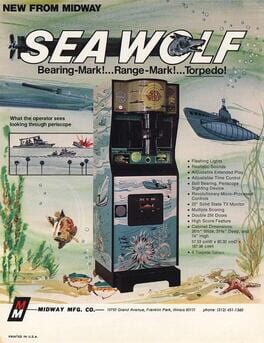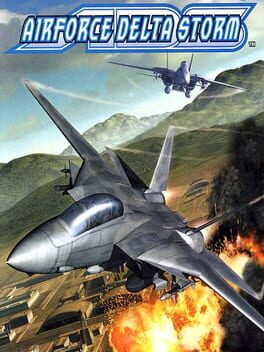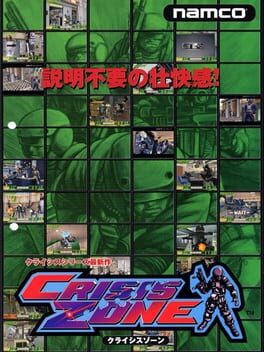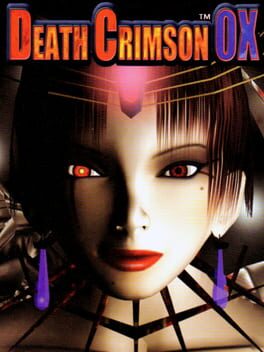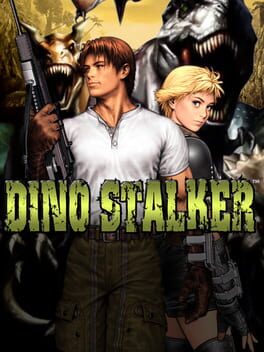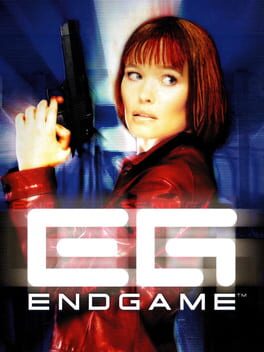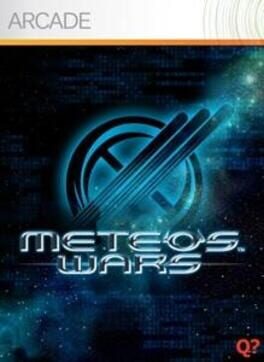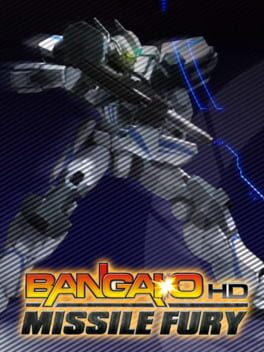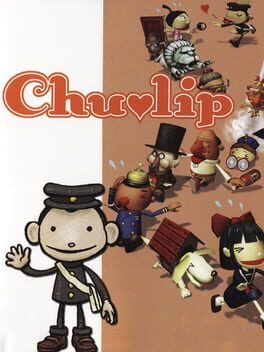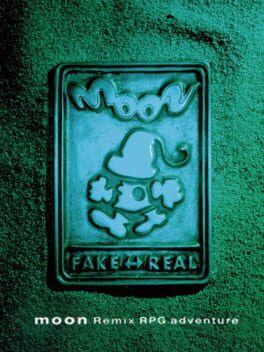donovansan
116 reviews liked by donovansan
So, my birthday is February 10th. Of course I posted about this in various online chats I was in, which led to someone I know on the How Long to Beat discord posted a single image and a joke that "here's a game you should play! ;)"
https://i.imgur.com/3kxNFxv.jpg
So once I looked at How Long to beat and saw it was like a 2 hour game I had to do it. And that's why I downloaded and played The Bugs Bunny Birthdat Blowout in 2023 of all things. So, what are my thoughts? Well, it isn't a horrible game, just one with some critical flaws that make it wear thin despite the modest playtime. The ol' Bugs Birthday Bashorama is pretty much what you'd expect from the NES in that it is a sidescrolling platformer, with one button to attack and another to jump. Six levels with four stages each. Basic stuff. Bugs controls...fine enough, not the tightest platformer ever but far from the worst, although the game's low framerate makes it sometimes feel less responsive than you'd like. I think the bigger issue comes from Bugs' hammer attack, which simply has too little range, and a bit of a windup to it. The end result is that trying to hit enemies WITHOUT getting hit yourself is frustrating, fortunately the only enemies you usually need to kill basically don't attack except by moving. But it does get pretty silly when you hammer a frog and its sprite just teleports forward and then it keeps jumping and hits you. Or lands in front of you and you're back to square one.
This game's difficulty is at war with itself, although it lands squarely in the "very easy" category. The way it gets there is mildly frustrating, in that the game is full of a lot of "Gotcha!" trickery (platforms that disappear under you being the biggest ones, with at least one required blind drop into a pit area that lands you on one and means you WILL die if you don't know to jump instantly, but also hidden enemies or the like), but when you aren't getting had the jumps are fairly reasonable and the game is mostly timing based and very easy. This is especially true because the game showers you with extra lives via the (pretty random, admittedly) bonus games (I even got a +50 lives near the end!), so you get some serious trial-and-error gameplay going on! It's far from the worst you'll get on the NES, but it does get tiring by the end of the game.
Let's talk about something good, if not fully utilized given it is a random liscensed game from 1990. I think the idea of this game's collectible, the carrots, turning into platforms for you to use after collecting them is an interesting design space. You do get some tricky jumps where you have to jump to collect them, land back onto the main stage and then use them, but they're rather few and far in between. I could totally see some modern 2D platformer use them well though, like hidden secret paths only done by backtracking after grabbing collectibles, or mix and matching it with stuff like crumbling platforms (I was shocked this game never did it) or moving platforms or whatever. It did make me think about the level design in a different way than a lot of games, so good on it. Also while the gotchas wear thin, they DO feel like they really fit the tone of Looney Tunes and Bugs in specific.
Why does this game have so many bosses when it reuses them so much? Daffy is a boss in EVERY world and like every time he is PATHETICALLY easy that's actually hilarious but also not good gameplay. You fight Elmer Fudd like three times. The fight does not change any time. The final boss is the only one who uses a truly different strategy, although Pepe le Pew is at least a bit unique. If you can't make unique bosses, at least scale them back a little bit to avoid the endless repition.
Anyway this game's plot is David Fincher's The Game so that obviously gives it an extra half star-
https://i.imgur.com/3kxNFxv.jpg
So once I looked at How Long to beat and saw it was like a 2 hour game I had to do it. And that's why I downloaded and played The Bugs Bunny Birthdat Blowout in 2023 of all things. So, what are my thoughts? Well, it isn't a horrible game, just one with some critical flaws that make it wear thin despite the modest playtime. The ol' Bugs Birthday Bashorama is pretty much what you'd expect from the NES in that it is a sidescrolling platformer, with one button to attack and another to jump. Six levels with four stages each. Basic stuff. Bugs controls...fine enough, not the tightest platformer ever but far from the worst, although the game's low framerate makes it sometimes feel less responsive than you'd like. I think the bigger issue comes from Bugs' hammer attack, which simply has too little range, and a bit of a windup to it. The end result is that trying to hit enemies WITHOUT getting hit yourself is frustrating, fortunately the only enemies you usually need to kill basically don't attack except by moving. But it does get pretty silly when you hammer a frog and its sprite just teleports forward and then it keeps jumping and hits you. Or lands in front of you and you're back to square one.
This game's difficulty is at war with itself, although it lands squarely in the "very easy" category. The way it gets there is mildly frustrating, in that the game is full of a lot of "Gotcha!" trickery (platforms that disappear under you being the biggest ones, with at least one required blind drop into a pit area that lands you on one and means you WILL die if you don't know to jump instantly, but also hidden enemies or the like), but when you aren't getting had the jumps are fairly reasonable and the game is mostly timing based and very easy. This is especially true because the game showers you with extra lives via the (pretty random, admittedly) bonus games (I even got a +50 lives near the end!), so you get some serious trial-and-error gameplay going on! It's far from the worst you'll get on the NES, but it does get tiring by the end of the game.
Let's talk about something good, if not fully utilized given it is a random liscensed game from 1990. I think the idea of this game's collectible, the carrots, turning into platforms for you to use after collecting them is an interesting design space. You do get some tricky jumps where you have to jump to collect them, land back onto the main stage and then use them, but they're rather few and far in between. I could totally see some modern 2D platformer use them well though, like hidden secret paths only done by backtracking after grabbing collectibles, or mix and matching it with stuff like crumbling platforms (I was shocked this game never did it) or moving platforms or whatever. It did make me think about the level design in a different way than a lot of games, so good on it. Also while the gotchas wear thin, they DO feel like they really fit the tone of Looney Tunes and Bugs in specific.
Why does this game have so many bosses when it reuses them so much? Daffy is a boss in EVERY world and like every time he is PATHETICALLY easy that's actually hilarious but also not good gameplay. You fight Elmer Fudd like three times. The fight does not change any time. The final boss is the only one who uses a truly different strategy, although Pepe le Pew is at least a bit unique. If you can't make unique bosses, at least scale them back a little bit to avoid the endless repition.
Anyway this game's plot is David Fincher's The Game so that obviously gives it an extra half star-
Pulseman
1994
It's always interesting to see conceptualizations of cyberspace from a time where computers weren't as commonplace as they are now. Psychedelic envisionings of worlds beyond our understanding, full of colorful and evocative imagery. In reality, a world of computers would most likely be formulaic and rigid, but who's to say that that has to be the case in fiction?
Pulseman does a few interesting things with this. The style and worlds are extremely beautiful and compelling, with cyberspace often feeling like a surreal dream. Pastel colors and trees that spin in the background, robotic birds and vector-based monsters traversing through the feverish landscapes. Pulseman, in addition to this, also has some amount of linear rigidity to its designs, though. Each level feels boxy. Mechanically concise. Efficient.
The imagined world of cyberspace and the direct world of assembly are one and the same in Pulseman, a fusion of conceptualization and simplification. Maybe, Pulseman argues, there is room for both a distinct style and mechanical focus.
Just maybe.
Then again, the actual mechanics of Pulseman aren't particularly captivating - while you're in awe at its stylistic choices, you'll probably notice that the levels you're blasting through don't have much going on in the department of actual play. Every level is a simple act of using your immense amount of tools, like your static charge that can become an electric ball or be used to become a whirling wheel of death that bounces off the walls, to obliterate everything in your path. This dissonance between the perceived harmony of style and substance and the actual lack of substance can be a bit jarring. There is no true harmony between the efficiency of technology and the artistic style of the human mind because the level designs simply aren't as interesting in their efficacy as they could be.
But damn. Talk about style!
Pulseman does a few interesting things with this. The style and worlds are extremely beautiful and compelling, with cyberspace often feeling like a surreal dream. Pastel colors and trees that spin in the background, robotic birds and vector-based monsters traversing through the feverish landscapes. Pulseman, in addition to this, also has some amount of linear rigidity to its designs, though. Each level feels boxy. Mechanically concise. Efficient.
The imagined world of cyberspace and the direct world of assembly are one and the same in Pulseman, a fusion of conceptualization and simplification. Maybe, Pulseman argues, there is room for both a distinct style and mechanical focus.
Just maybe.
Then again, the actual mechanics of Pulseman aren't particularly captivating - while you're in awe at its stylistic choices, you'll probably notice that the levels you're blasting through don't have much going on in the department of actual play. Every level is a simple act of using your immense amount of tools, like your static charge that can become an electric ball or be used to become a whirling wheel of death that bounces off the walls, to obliterate everything in your path. This dissonance between the perceived harmony of style and substance and the actual lack of substance can be a bit jarring. There is no true harmony between the efficiency of technology and the artistic style of the human mind because the level designs simply aren't as interesting in their efficacy as they could be.
But damn. Talk about style!
I really shouldn’t get Doom II
I really should be bothered, stressed, and highly frustrated by it.
It has some levels that should drive to pure rage, stuff that in any other context I should theoretically complain about.
And yet
I get it
I’ve spoken many times of the importance of Doom both as a space for community and player expression and the pivotal impact it had on the PC scene, and it still feel like I’ve only said understatements. A game that holds up so amazingly well decades later, with some of the most fascinating and fun levels ever put together, and with three episodes that each try to tackle not only different visuals and themes, but also each focuses on a completely different gameplay idea. All this to say that, yeah, I really like the funny killing demon game.
I think suffices to say that Doom II had some mad big shoes to fill, both now for new players like me and especially back then, and I gotta be completely serious here and say: I really didn’t think it could ever do it. Doom was and, in a way, still is an incredibly unique way so tightly designed, so puzzle-like like on its maze-like lay-outs, so calculated with how it decides when to throw curve-balls at you and pull-off novel enemy positioning; Episode 3,Inferno, felt like the final frontier in that regard, the ultimate exploration of the whack-ass and unexpected ideas you could pull off with Doom’s base, at least back then. And if ‘95’s E4 introduced in The Ultimate Doom is anything to go by, perhaps it’s a better idea to leave things as they are to not repeat a formula until it gets stale or expand it to extremes where it just breaks apart.
Thing is, Doom II didn’t even came out in 95, hell, it didn’t release after Ultimate Doom. 1994, more specifically September of 1994, not even a full year after the original’s release, so little time that with the tools at their disposal and without as much as a Q&A department, the team had to test the maps manually, something which they didn’t even could really do properly; so little time that basically the entirety of the original’s base was reused, which led to some funky stuff like only one new weapon being added and one of the newly introduced enemies clearly being a recolored Hell Baron; so little time that the mere idea of wanting to make even more maps that those of the previous release should have spelled absolute disaster. Because, how in the living fuck do you pull it together? How could you expect to produce something that doesn’t feel more that a cobbled together expansion with such a time constraint? How do you make more Doom?
Doom II’s answer to that question is straightforward: you don’t
This not to say the game doesn’t pick up from where it left off, both in that it continues just after the rather disturbing ending of the original, and that everything you can do is lifted straight up from that original adventure; the game’s gonna look at you funny if you play this as your first rodeo, ‘cause it’s not gonna pull any punches, but if you did play the original, the buckle up my friend, hell is loose and it has brought a surprise or two with it.
Things already feel different from the very start, even in the small room of Entryway and the cramped passage-ways of Underhalls, something clearly has changed; you face the same enemies, your arsenal is formed by the same arms you got to meet in your first go around, and yet, the design feels tighter, everything feels faster; you dart around enemies, evading zombies and demons at every turn, they surprise you in unexpected ways, it demands speed of you. The original Doom was never a slower game by any stretch of the imagination, but it was more patience focused, more strategy based, and many of the situations that it created revolved around waiting and taking you’re your best shot or calmly thinking where to go after grabbing a key. In Hell of Earth I can count with the fingers of only one of my hands the moments I let go of the run button, and I say this as the highest form of compliment possible.
And it only keeps going: the super shotgun finally gets introduced, a weapon so good that the only complain I have with it is that it kind of makes the original shotgun obsolete; a fantastic closed range powerhouse that it feels like the developers where whispering ‘’now you gotta go IN’’ as they hand it to you; you also get your arsenal at a much steady and faster pace that in Doom, which is surprising considering that this time the Episode format is completely ditched: the levels go after one another, and unless you die or decide to reset, pistol-starting is now an option rather an obligation, and even then, if you do decide to do it, you can potentially regain most of your weapons even before being half-way done with a level; I myself accidentally pistol-started at Barrels of fun and I’ve never been so glad about a miss click in my life, it was so incredibly fun and exciting and tense even more that it would have been otherwise. Doom II also feels far less stingy with its ammo, in the past you may have switch an arm into another because you just couldn’t use it anymore, now it’s more a matter of ‘’ok, how do I deal with this bunch of fuckers?’’; battles start through ambushes, traps or encounters, and you need to quickly analyze the situation if you want to get through alive in less than a second… and that’s more than enough. Doom II may be cheecky with its enemy placement, but its never unfair, it always gives you enough time to either take cover or to think about what’s the better tool for a certain enemy or group: the rocket launcher may be the best option to geal with that group of Imps, but that Chain-gunner can eat through health in a matter of seconds, why not use the super shot gun on him first and on tap him while you dart around the fire-balls? That’s only a taste of the type of situations of Doom II puts you through, combats that should feel stressful and frustrating, but instead feel exciting and in occasions made me feel an adrenaline like no other; I swear I audibly gasped when I say that amount of enemies at the Suburbs, and I smiled and celebrated as I emerged victorious after dealing with them in a way not even I thought I could.
Levels only get more creative and expansive as they go, The Crusher (aptly named after its main attraction) shows how the rest of the game will play around verticality to create more interesting battles and explorations, as well as introduce unconventional ideas that you might not have expected to see in the previous entry, and that changes your mindset in a way you may not notice at first, but that will certainly will make you be on the look-out. Things that once would have been secrets now are required to be found to progress, it asks of you to be creative, to think outside the box and do what you never would have even conceived of doing. In one of the levels I was trapped, not knowing what to do, but then I noticed a wall with a texture that was extremely different from the rest. I thought that ‘’There’s no fucking way’’. I shoot it. The path opens. Time at time again, places like The Citadelor The Spirit World expect you a level of attention and imagination that the game lends itself to receive, an imagination you have and use to beat even the most seemingly confusing puzzles and mazes; you’ll need to check the map, you’ll need to run, you’ll need to brave, it’s through that that game will reward you, maybe with a Megacharge, maybe with the BFG, maybe with a secret level, who knows! I certainly can’t say for sure ‘cause I feel like I’ve left a ton to even be discovered!
And yeah, I didn’t meant to not use the world ‘’paces’’, more than ever in any of the Doom Episodes, the Hell on Earth maps feel like real parts of a world: expansive and open world urban locations overrun by demons, cultist temples created to stop your advances, old bastions taken and repurposes by the legions of hell to fight against you; even the more ‘’gamey’’ of levels, like Tricks and Traps! or Gotcha!, are excusable because they so fun and even funny that I cannot be mad at them, and as for the rest, they really sell you the idea that you are traversing and meeting your objectives little by little; the narrative has as much presence as the original game, but it has a much greater impact ‘cause not only the stakes are even higher, it also feels like you are progressing through a real story, and that this is a true war against the enemies that face you, new and old.
The game also realized the full potential of its older cast, like how both the Cyberdemon and Spider-Mastermind act much better as level obstacles to evade than actual bosses, and the new faces that arrive are simply incredible; I’ve genuinely never loved and hated an enemy in a videogame equally as I do the Arch-vile, seeing him generated dread in my body, but also made me smile at the opportunity to face such an interesting and unique enemy. The Pain Elementals, Hell Knights an Revenants are all incredible new comer that pile up on the ‘’NEVER STOP MOVING FOR THE LOVE OF GOD’’ mentality, and they are all incredibly memorable, especially the Mancubi, I already loved them in the new games, but hearing them scream their own name as they shoot double projectiles was so fucking memorable. And that final boss.. GOD, finally a Doom boss that requires EVERYTHING you learnt; ammo management, dealing with individual threads, resource usage and even aim, such a fantastic send off that isn’t just a ‘’spam BFG to win fest’’, this is simply outstanding, so fun, so imperfect in the best way imaginable.
If Doom was already a passion project, then Doom II is that even more deranged, more reckless, more… itself. Sandy, Romero and the team knew they could do a true glory fest, and they went even beyond that. Doom II is so experimental, so unique, so unquestionably goofy that I can’t stop gushing about it. It’s more than a blast to beginning to end, it’s a challenge that wants to have as much as fun as you do playing it, and tries out new stuff at each turn, and even those times it doesn’t stick, it keeps being memorable in the best way imaginable.
It's OG Doom at its most savage, at its most free and wild, and its most fun and creative, and I for one have fallen in love with it, and now I can totally see why so many others did too, why so many others keep its memory and spirit alive through .wads and crazy ideas through this one moreso than any other. It’s a game in a way made for itself, but also for everyone that loves Doom, for everyone that loves shooters, for everyone that loves untamed creativeness.
What a fucking magnificent way to start the year, an experience that goes beyond the sum of its parts, and adventure that builds something that evolves and subverts what it once was, the opposite of Hell on Earth.
Rebuilding Earth ought to be a lot more fun than ruining it was
I really should be bothered, stressed, and highly frustrated by it.
It has some levels that should drive to pure rage, stuff that in any other context I should theoretically complain about.
And yet
I get it
I’ve spoken many times of the importance of Doom both as a space for community and player expression and the pivotal impact it had on the PC scene, and it still feel like I’ve only said understatements. A game that holds up so amazingly well decades later, with some of the most fascinating and fun levels ever put together, and with three episodes that each try to tackle not only different visuals and themes, but also each focuses on a completely different gameplay idea. All this to say that, yeah, I really like the funny killing demon game.
I think suffices to say that Doom II had some mad big shoes to fill, both now for new players like me and especially back then, and I gotta be completely serious here and say: I really didn’t think it could ever do it. Doom was and, in a way, still is an incredibly unique way so tightly designed, so puzzle-like like on its maze-like lay-outs, so calculated with how it decides when to throw curve-balls at you and pull-off novel enemy positioning; Episode 3,Inferno, felt like the final frontier in that regard, the ultimate exploration of the whack-ass and unexpected ideas you could pull off with Doom’s base, at least back then. And if ‘95’s E4 introduced in The Ultimate Doom is anything to go by, perhaps it’s a better idea to leave things as they are to not repeat a formula until it gets stale or expand it to extremes where it just breaks apart.
Thing is, Doom II didn’t even came out in 95, hell, it didn’t release after Ultimate Doom. 1994, more specifically September of 1994, not even a full year after the original’s release, so little time that with the tools at their disposal and without as much as a Q&A department, the team had to test the maps manually, something which they didn’t even could really do properly; so little time that basically the entirety of the original’s base was reused, which led to some funky stuff like only one new weapon being added and one of the newly introduced enemies clearly being a recolored Hell Baron; so little time that the mere idea of wanting to make even more maps that those of the previous release should have spelled absolute disaster. Because, how in the living fuck do you pull it together? How could you expect to produce something that doesn’t feel more that a cobbled together expansion with such a time constraint? How do you make more Doom?
Doom II’s answer to that question is straightforward: you don’t
This not to say the game doesn’t pick up from where it left off, both in that it continues just after the rather disturbing ending of the original, and that everything you can do is lifted straight up from that original adventure; the game’s gonna look at you funny if you play this as your first rodeo, ‘cause it’s not gonna pull any punches, but if you did play the original, the buckle up my friend, hell is loose and it has brought a surprise or two with it.
Things already feel different from the very start, even in the small room of Entryway and the cramped passage-ways of Underhalls, something clearly has changed; you face the same enemies, your arsenal is formed by the same arms you got to meet in your first go around, and yet, the design feels tighter, everything feels faster; you dart around enemies, evading zombies and demons at every turn, they surprise you in unexpected ways, it demands speed of you. The original Doom was never a slower game by any stretch of the imagination, but it was more patience focused, more strategy based, and many of the situations that it created revolved around waiting and taking you’re your best shot or calmly thinking where to go after grabbing a key. In Hell of Earth I can count with the fingers of only one of my hands the moments I let go of the run button, and I say this as the highest form of compliment possible.
And it only keeps going: the super shotgun finally gets introduced, a weapon so good that the only complain I have with it is that it kind of makes the original shotgun obsolete; a fantastic closed range powerhouse that it feels like the developers where whispering ‘’now you gotta go IN’’ as they hand it to you; you also get your arsenal at a much steady and faster pace that in Doom, which is surprising considering that this time the Episode format is completely ditched: the levels go after one another, and unless you die or decide to reset, pistol-starting is now an option rather an obligation, and even then, if you do decide to do it, you can potentially regain most of your weapons even before being half-way done with a level; I myself accidentally pistol-started at Barrels of fun and I’ve never been so glad about a miss click in my life, it was so incredibly fun and exciting and tense even more that it would have been otherwise. Doom II also feels far less stingy with its ammo, in the past you may have switch an arm into another because you just couldn’t use it anymore, now it’s more a matter of ‘’ok, how do I deal with this bunch of fuckers?’’; battles start through ambushes, traps or encounters, and you need to quickly analyze the situation if you want to get through alive in less than a second… and that’s more than enough. Doom II may be cheecky with its enemy placement, but its never unfair, it always gives you enough time to either take cover or to think about what’s the better tool for a certain enemy or group: the rocket launcher may be the best option to geal with that group of Imps, but that Chain-gunner can eat through health in a matter of seconds, why not use the super shot gun on him first and on tap him while you dart around the fire-balls? That’s only a taste of the type of situations of Doom II puts you through, combats that should feel stressful and frustrating, but instead feel exciting and in occasions made me feel an adrenaline like no other; I swear I audibly gasped when I say that amount of enemies at the Suburbs, and I smiled and celebrated as I emerged victorious after dealing with them in a way not even I thought I could.
Levels only get more creative and expansive as they go, The Crusher (aptly named after its main attraction) shows how the rest of the game will play around verticality to create more interesting battles and explorations, as well as introduce unconventional ideas that you might not have expected to see in the previous entry, and that changes your mindset in a way you may not notice at first, but that will certainly will make you be on the look-out. Things that once would have been secrets now are required to be found to progress, it asks of you to be creative, to think outside the box and do what you never would have even conceived of doing. In one of the levels I was trapped, not knowing what to do, but then I noticed a wall with a texture that was extremely different from the rest. I thought that ‘’There’s no fucking way’’. I shoot it. The path opens. Time at time again, places like The Citadelor The Spirit World expect you a level of attention and imagination that the game lends itself to receive, an imagination you have and use to beat even the most seemingly confusing puzzles and mazes; you’ll need to check the map, you’ll need to run, you’ll need to brave, it’s through that that game will reward you, maybe with a Megacharge, maybe with the BFG, maybe with a secret level, who knows! I certainly can’t say for sure ‘cause I feel like I’ve left a ton to even be discovered!
And yeah, I didn’t meant to not use the world ‘’paces’’, more than ever in any of the Doom Episodes, the Hell on Earth maps feel like real parts of a world: expansive and open world urban locations overrun by demons, cultist temples created to stop your advances, old bastions taken and repurposes by the legions of hell to fight against you; even the more ‘’gamey’’ of levels, like Tricks and Traps! or Gotcha!, are excusable because they so fun and even funny that I cannot be mad at them, and as for the rest, they really sell you the idea that you are traversing and meeting your objectives little by little; the narrative has as much presence as the original game, but it has a much greater impact ‘cause not only the stakes are even higher, it also feels like you are progressing through a real story, and that this is a true war against the enemies that face you, new and old.
The game also realized the full potential of its older cast, like how both the Cyberdemon and Spider-Mastermind act much better as level obstacles to evade than actual bosses, and the new faces that arrive are simply incredible; I’ve genuinely never loved and hated an enemy in a videogame equally as I do the Arch-vile, seeing him generated dread in my body, but also made me smile at the opportunity to face such an interesting and unique enemy. The Pain Elementals, Hell Knights an Revenants are all incredible new comer that pile up on the ‘’NEVER STOP MOVING FOR THE LOVE OF GOD’’ mentality, and they are all incredibly memorable, especially the Mancubi, I already loved them in the new games, but hearing them scream their own name as they shoot double projectiles was so fucking memorable. And that final boss.. GOD, finally a Doom boss that requires EVERYTHING you learnt; ammo management, dealing with individual threads, resource usage and even aim, such a fantastic send off that isn’t just a ‘’spam BFG to win fest’’, this is simply outstanding, so fun, so imperfect in the best way imaginable.
If Doom was already a passion project, then Doom II is that even more deranged, more reckless, more… itself. Sandy, Romero and the team knew they could do a true glory fest, and they went even beyond that. Doom II is so experimental, so unique, so unquestionably goofy that I can’t stop gushing about it. It’s more than a blast to beginning to end, it’s a challenge that wants to have as much as fun as you do playing it, and tries out new stuff at each turn, and even those times it doesn’t stick, it keeps being memorable in the best way imaginable.
It's OG Doom at its most savage, at its most free and wild, and its most fun and creative, and I for one have fallen in love with it, and now I can totally see why so many others did too, why so many others keep its memory and spirit alive through .wads and crazy ideas through this one moreso than any other. It’s a game in a way made for itself, but also for everyone that loves Doom, for everyone that loves shooters, for everyone that loves untamed creativeness.
What a fucking magnificent way to start the year, an experience that goes beyond the sum of its parts, and adventure that builds something that evolves and subverts what it once was, the opposite of Hell on Earth.
Rebuilding Earth ought to be a lot more fun than ruining it was
Donkey Kong 3
1983
Some arcade games make it past location testing without issue; occasionally they need some tuning, or a redesign, but nothing prohibitive. Others fail to meet expectations and get canned. A select few survive this stage despite not passing muster, and that's possibly what happened with Donkey Kong 3. It's a sad yet mundane story of a product unable to meet (let alone surpass) its precursors, all the while eclipsed by the genre competitors it was aping.
Our tale begins further back than the original Donkey Kong, however, as this sequel owes much more to Nintendo's ill-fated vertical shooters of the time, particularly Radar Scope and Space Firebird. Both ancestors offered technically competent but uninteresting variations on the ubiquitous Space Invaders formula. To the latter's credit, the developers had a solid grasp on sound and graphical feedback by this point, with players feeling that crunchy impact while mowing down alien hordes. But the lack of risk-reward features like the degrading shields in Taito's game, or the cleverly evolving raid and bullet patterns of Galaga a bit later, meant that these post-Sheriff shooters were just too spare and derivative to stand out. I can definitely see why Nintendo's last attempt to break into the shooter market went for a mix of platforming, puzzling, and blaster action. And they would have had a winner if not for some critical problems in the pernicious primate's latest title.
The dastardly donk's back at it again…in a greenhouse? I suppose it's better than Congo Bongo's colonialist chase through the jungles. Genyo Takeda and Shigeru Miyamoto help provide the customary trappings of an early-'80s Nintendo arcade release, with fairly responsive controls accompanied by a very readable set of graphics. I rarely struggle to figure out what's happening on-screen even way late into a playthrough, and the SFX ring clearly in my ears. Nothing here feels like an evolution beyond Donkey Kong Jr., though. The likes of SEGA and Namco were already starting to produce more audiovisually stimulating stuff like the former's DK clone and the latter's Mappy. Also lacking here is much of the series' humor—the most I can recall is my amusement whenever DK gets his head stuck in the beehive. It's a rather sober outing for not-Mario vs. not-Kong, contrary to expectations that these developers had previously set. I'd be fine with all this if the game design itself was strong, but, well…
Simply put, the game's a bit too easy, with its difficulty level evolving mainly from faster attacks and a few additional enemy types. Our protagonist Stanley may have a measly little pesticide pump to work with, but the admittedly clever goal of scaring DK to the top means it's possible to ignore the bugs and just go for broke. Arguably the most fun I can have with Donkey Kong 3 is exactly that: speedrunning each board to get as high a time bonus as possible, ensuring I can regularly extend my lives. That sounds fun on paper; now imagine this game throwing you a frequent gun power-up which trivializes combat entirely. Sure, you have to actually lose a life for the upgrade to reappear, and there's still some hits on DK to go before it tumbles. But the relative ease of getting 1-ups via fast stage clears means it's often too easy to get this item. One has to play several stages before there's much threat of bees successfully stealing away with your flowers…which means perfect bonuses become a formality rather than a reward. Combine all these flaws and we've got a game loop which struggles to encourage more skillful play and leads to unsatisfying high-score runs.
The echoes of mediocre starfighting action from Nintendo's pre-Donkey Kong bombs reverberate throughout this final numbered entry, contrary to the heights their R&D teams would reach via many Family Computer releases to come. I feel bad for Genyo Takeda especially since he's so often singled out as the one responsible for playable yet dismal software such as this. To me, it doesn't seem as though releases like this suffered from a lack of foresight, ambition, or no-nonsense design. He later directed the StarTropics games, simultaneously within Nintendo's house style and quite distinct from anything Miyamoto's crew were involved with. (Let's also remember that Miyamoto was involved with Donkey Kong 3, yet the besmirchment's sent elsewhere.) Something managed to go wrong with each and every one of the company's arcade shooters, regardless of circumstances, and it's no surprise that they later played it safe with Solar Striker. If there's anything I'll give Donkey Kong 3 credit for, it's that shooting-heavy action platformers were a rarity in 1983. Add this distinction to the game's brand power and I'm unsurprised that it still sold reasonably well to arcade operators in Japan, no matter the lack of staying power. Still, I'd rather play Moon Patrol; even the best PCBs of '83 struggled to match that one in quality and replayability.
Save for its quick appearance on the Famicom, Donkey Kong 3 fell into footnote status much quicker than the average Nintendo hit of the time, and I attribute that to its shortcomings more than just its small delights. There's still a competent action game in here whenever you're unable to immediately trivialize a stage. I had fun timing my shots to avoid blocking myself with stunned snakes. The way Stanley gets wiped out by an ambush of insects is morbidly amusing. And while it becomes too damn straightforward after 15 minutes, I hardly mind this kind of accessible arcade experience after playing some of the period's more punishing stuff. But in exchange for that ease of completion, I expect way more variation in levels, enemy characteristics, and types of traps to deal with. It's because the game settles for so much less than it promises that I can't help but rate it so low. And as 1984's catalog would show, Nintendo themselves knew that the future belonged to increasingly complex and extensible game loops, even for cartridges as constrained as Excitebike. (Hell, it's a wonder that Takeda's own Sky Skipper gets more retrospective praise than anyone ever expected.) In the end, this gassed-up-the-ass gorilla had reached the end of his usefulness; it would take something altogether new and wild to bring back the beast.
Our tale begins further back than the original Donkey Kong, however, as this sequel owes much more to Nintendo's ill-fated vertical shooters of the time, particularly Radar Scope and Space Firebird. Both ancestors offered technically competent but uninteresting variations on the ubiquitous Space Invaders formula. To the latter's credit, the developers had a solid grasp on sound and graphical feedback by this point, with players feeling that crunchy impact while mowing down alien hordes. But the lack of risk-reward features like the degrading shields in Taito's game, or the cleverly evolving raid and bullet patterns of Galaga a bit later, meant that these post-Sheriff shooters were just too spare and derivative to stand out. I can definitely see why Nintendo's last attempt to break into the shooter market went for a mix of platforming, puzzling, and blaster action. And they would have had a winner if not for some critical problems in the pernicious primate's latest title.
The dastardly donk's back at it again…in a greenhouse? I suppose it's better than Congo Bongo's colonialist chase through the jungles. Genyo Takeda and Shigeru Miyamoto help provide the customary trappings of an early-'80s Nintendo arcade release, with fairly responsive controls accompanied by a very readable set of graphics. I rarely struggle to figure out what's happening on-screen even way late into a playthrough, and the SFX ring clearly in my ears. Nothing here feels like an evolution beyond Donkey Kong Jr., though. The likes of SEGA and Namco were already starting to produce more audiovisually stimulating stuff like the former's DK clone and the latter's Mappy. Also lacking here is much of the series' humor—the most I can recall is my amusement whenever DK gets his head stuck in the beehive. It's a rather sober outing for not-Mario vs. not-Kong, contrary to expectations that these developers had previously set. I'd be fine with all this if the game design itself was strong, but, well…
Simply put, the game's a bit too easy, with its difficulty level evolving mainly from faster attacks and a few additional enemy types. Our protagonist Stanley may have a measly little pesticide pump to work with, but the admittedly clever goal of scaring DK to the top means it's possible to ignore the bugs and just go for broke. Arguably the most fun I can have with Donkey Kong 3 is exactly that: speedrunning each board to get as high a time bonus as possible, ensuring I can regularly extend my lives. That sounds fun on paper; now imagine this game throwing you a frequent gun power-up which trivializes combat entirely. Sure, you have to actually lose a life for the upgrade to reappear, and there's still some hits on DK to go before it tumbles. But the relative ease of getting 1-ups via fast stage clears means it's often too easy to get this item. One has to play several stages before there's much threat of bees successfully stealing away with your flowers…which means perfect bonuses become a formality rather than a reward. Combine all these flaws and we've got a game loop which struggles to encourage more skillful play and leads to unsatisfying high-score runs.
The echoes of mediocre starfighting action from Nintendo's pre-Donkey Kong bombs reverberate throughout this final numbered entry, contrary to the heights their R&D teams would reach via many Family Computer releases to come. I feel bad for Genyo Takeda especially since he's so often singled out as the one responsible for playable yet dismal software such as this. To me, it doesn't seem as though releases like this suffered from a lack of foresight, ambition, or no-nonsense design. He later directed the StarTropics games, simultaneously within Nintendo's house style and quite distinct from anything Miyamoto's crew were involved with. (Let's also remember that Miyamoto was involved with Donkey Kong 3, yet the besmirchment's sent elsewhere.) Something managed to go wrong with each and every one of the company's arcade shooters, regardless of circumstances, and it's no surprise that they later played it safe with Solar Striker. If there's anything I'll give Donkey Kong 3 credit for, it's that shooting-heavy action platformers were a rarity in 1983. Add this distinction to the game's brand power and I'm unsurprised that it still sold reasonably well to arcade operators in Japan, no matter the lack of staying power. Still, I'd rather play Moon Patrol; even the best PCBs of '83 struggled to match that one in quality and replayability.
Save for its quick appearance on the Famicom, Donkey Kong 3 fell into footnote status much quicker than the average Nintendo hit of the time, and I attribute that to its shortcomings more than just its small delights. There's still a competent action game in here whenever you're unable to immediately trivialize a stage. I had fun timing my shots to avoid blocking myself with stunned snakes. The way Stanley gets wiped out by an ambush of insects is morbidly amusing. And while it becomes too damn straightforward after 15 minutes, I hardly mind this kind of accessible arcade experience after playing some of the period's more punishing stuff. But in exchange for that ease of completion, I expect way more variation in levels, enemy characteristics, and types of traps to deal with. It's because the game settles for so much less than it promises that I can't help but rate it so low. And as 1984's catalog would show, Nintendo themselves knew that the future belonged to increasingly complex and extensible game loops, even for cartridges as constrained as Excitebike. (Hell, it's a wonder that Takeda's own Sky Skipper gets more retrospective praise than anyone ever expected.) In the end, this gassed-up-the-ass gorilla had reached the end of his usefulness; it would take something altogether new and wild to bring back the beast.
there's a lot said already abt the hypnotically repulsive audiovisual presentation with the frantic camera and barebones controls, it made me feel tweaked out and paranoid in a horrifying way and it rocked, but the thing worth talking about for me is the structure of this game, how vitally spartan its character is. how utterly, necessarily devoid it is of much sympathy for its leads. i skimmed through a playthrough of K&L1 after playing this, which i have no desire to ever play, and it just felt very of its time. a pair of antiheroes make a huge mess of things and argue incessantly and ruin lives but you gotta love their camaraderie and attitude!! and then the women in their life dare to nag nag nag at them about all the fucked up shit they get put through because of them until they inevitably get shot, because they talk too much
the second game inherits their disgusting personalities and their capacity for misery--in fact increases that aspect to a fever pitch--and you might look at it as just following in the boring footsteps of its predecessor with a more interesting aesthetic going for it. but the difference is how unsettlingly off things feel from what you'd expect. the cutscenes are so curt, there is hardly any kind of relatable stakes for the characters other than some vague deal to further imperialism (they dont care abt that part obviously why would they). everything happens with hardly any dramatic rhythm, just hot headed banter and death, with things getting worse and worse. the misogyny is still here but even that has a different tone; the women in kane and lynch's lives this time become little more than convenient excuses for them to continue their evil rampaging, not the motivation to do better that they probably tell themselves they are to help them sleep at night. they're in a hell of their making.
the bluntness behind the narrative helps make the bond between the two MILES more interesting. lynch's schizophrenia isn't exploited for :twisted: funny comedy this time but instead to render him as a pathetic crazed animal with a gun. and the stroke of genius of basically ignoring how K&L1 ends gives kane's more levelheadedness by comparison a delusional sociopathic underpinning. they scream at each other about how much they ruined each other's lives (much like the women they love in the previous game hmm [thinks really hard abt this]) yet at no point in the game does that tension come to a head between them like the first game would tease. it always evaporates away awkwardly. there's no bro moments of "heh you're alright" or anything like that ever in sight because they do not deserve that, they just drop their in-the-moment tantrum and go back to doing the only thing they ever know how to do. this is because, despite how they are unable to actually feel love or not destroy things, they ultimately understand each other better than anyone. they NEED each other so bad. AND YET!!! not even this is portrayed with much more than a kind of pity, if that, it's just a human tendency to prefer not being alone in your cosmic punishment. it's nothing to get too attached to.
if this game has anything that could be called a positive human emotion it wants to hone in on, it's this, and it is so incredibly compelling in its smallness to me that it sticks out beyond the rest of the genre subversion in the game to heighten it further. even a couple of rabid dogs will feel loyalty towards each other, when they know neither of them's going to heaven
the second game inherits their disgusting personalities and their capacity for misery--in fact increases that aspect to a fever pitch--and you might look at it as just following in the boring footsteps of its predecessor with a more interesting aesthetic going for it. but the difference is how unsettlingly off things feel from what you'd expect. the cutscenes are so curt, there is hardly any kind of relatable stakes for the characters other than some vague deal to further imperialism (they dont care abt that part obviously why would they). everything happens with hardly any dramatic rhythm, just hot headed banter and death, with things getting worse and worse. the misogyny is still here but even that has a different tone; the women in kane and lynch's lives this time become little more than convenient excuses for them to continue their evil rampaging, not the motivation to do better that they probably tell themselves they are to help them sleep at night. they're in a hell of their making.
the bluntness behind the narrative helps make the bond between the two MILES more interesting. lynch's schizophrenia isn't exploited for :twisted: funny comedy this time but instead to render him as a pathetic crazed animal with a gun. and the stroke of genius of basically ignoring how K&L1 ends gives kane's more levelheadedness by comparison a delusional sociopathic underpinning. they scream at each other about how much they ruined each other's lives (much like the women they love in the previous game hmm [thinks really hard abt this]) yet at no point in the game does that tension come to a head between them like the first game would tease. it always evaporates away awkwardly. there's no bro moments of "heh you're alright" or anything like that ever in sight because they do not deserve that, they just drop their in-the-moment tantrum and go back to doing the only thing they ever know how to do. this is because, despite how they are unable to actually feel love or not destroy things, they ultimately understand each other better than anyone. they NEED each other so bad. AND YET!!! not even this is portrayed with much more than a kind of pity, if that, it's just a human tendency to prefer not being alone in your cosmic punishment. it's nothing to get too attached to.
if this game has anything that could be called a positive human emotion it wants to hone in on, it's this, and it is so incredibly compelling in its smallness to me that it sticks out beyond the rest of the genre subversion in the game to heighten it further. even a couple of rabid dogs will feel loyalty towards each other, when they know neither of them's going to heaven
Spec Ops: The Line
2012
Many smart people think Spec Ops: The Line is a stupid fake-deep game, and viewed without its cultural context that's really all it is. What makes the game reasonably cool is that it was originally essentially a trap- masquerading as a generic modern military shooter, as far as I can tell its intention was to make people that love call of duty actually think a little bit about call of duty. It does a good job of that at times, but if you've already thought about call of duty you're not really the target audience, and anyone that plays the game today probably isn't the target audience.
in awe of wayforwards incredible consistency in never making a game better than the most mid thing youve ever played and basically just coast off the goodwill of making a character design people liked 20 years ago. truly, this is an incredibly average licensed platformer for babies. with bad shmup sections.
Spider-Man 3
2007
Narratively, this is a fascinating artifact. So disjointed and surreal it almost feels like the fever dream of a deeply sick crew member recalling their time working on the movie. Obviously rushed to be released at the same time as said movie and yet they completely forgot to incorporate anything from it into the game. Every single villain in the Spider-Man universe seems to be crammed in here and when the developers were ready to put this onto shelves they realized they completely forgot to include any of the major characters from the movie and just haphazardly threw them in there.
How else can you explain why they're given so little time here? If you knew nothing about the movie you would have no idea why all the climatic moments in this are centered around characters with almost no prior build-up. Without the opening and closing monologues that just flat out explains the entire Raimi series and Spider-Man's philosophy nothing here would make sense. Harry, a MAJOR part of the movie(s), only has two moments in this (both moments that the game INSISTS are majorly important) outside the opening monologue and when all is said and done we don't even know the fate of his character. He's just swatted off the screen by a strangely dummy thicc Venom and that's the last we see of him. No reconciliation with Spider-Man/Peter, not even a whisper of him in the closing monologue. He's just gone. Like where the hell did he go? Why did they put him in this??
The climatic finale taking place in a construction site that was surrounded by hundreds of bystanders in the movie is left completely barren here as Spider-Man and New Goblin battle it out with Venom and a GIANT Sandman (mind you, like Harry, this is only the second time the game has you interact with both Sandman and Eddie/Venom). The only person there to care is Mary Jane being her useless self (and that's okay) while bystanders are literally driving right next to the site giving it no attention whatsoever and it couldn't be any funnier how much the game doesn't give a shit about any of it. The game will dedicate four or five missions to each of its own villains but anything from the movie gets one mission after every 30 missions of the game's own. Almost feels like the developers had some kind of vengeance at Sony and purposefully sidelined the movie in favor of their own (boring yet hilarious) stuff. They're game developers working for a major company so it definitely wouldn't be shocking if they had any hostility towards the heads during the making of this.
Nonetheless, bless these developers. Entire game is a combination of rushed & "who fucking cares" with enough effort put into the existent yet non-existent narrative that it hits that peculiar line in the middle of "so bad it's good" and "they actually meant for this to be like this". You can really melt your mind thinking about how this one came to be. Was never not having a good time listening to these iconic characters they've made unbelievably deranged. Highlights of the game are that dummy thicc Venom and when you go idle while wearing the black suit Peter will eventually start screaming for no reason which is probably the only worthwhile gameplay in this. The slow motion dodge button makes the game stupid easy and if you don't use it some sections are almost impossible. Camera is just about the worst thing you can get in a videogame where a core gameplay element is swinging from building to building and the overall presentation is the stuff of nightmares. Back when this came out I remember thinking that this was (or at least was gonna be) next-level stuff that was going to push next-generation consoles to its edge. Maybe Peter sometimes looks neat in the black suit but overall not a single thing here looks good (even for back then) but for the best because would you ever want to replace something like this classic moment, among many, with anything else?.
Definitely a BAD game but certainly an entertaining one. At the end of the day, this has only made me miss the days of the movie tie-in game. Rarely do we get this kind of "memorable" anymore and it only made me sad that this era is long over with. Probably a 1 star for how awful it plays despite how entertained I was by everything else but I can't give anything with Bruce Campbell as The Narrator anything less than two (but this version of the game should really be zeros stars for the omission of our Father Doctor Michael Morbius).
How else can you explain why they're given so little time here? If you knew nothing about the movie you would have no idea why all the climatic moments in this are centered around characters with almost no prior build-up. Without the opening and closing monologues that just flat out explains the entire Raimi series and Spider-Man's philosophy nothing here would make sense. Harry, a MAJOR part of the movie(s), only has two moments in this (both moments that the game INSISTS are majorly important) outside the opening monologue and when all is said and done we don't even know the fate of his character. He's just swatted off the screen by a strangely dummy thicc Venom and that's the last we see of him. No reconciliation with Spider-Man/Peter, not even a whisper of him in the closing monologue. He's just gone. Like where the hell did he go? Why did they put him in this??
The climatic finale taking place in a construction site that was surrounded by hundreds of bystanders in the movie is left completely barren here as Spider-Man and New Goblin battle it out with Venom and a GIANT Sandman (mind you, like Harry, this is only the second time the game has you interact with both Sandman and Eddie/Venom). The only person there to care is Mary Jane being her useless self (and that's okay) while bystanders are literally driving right next to the site giving it no attention whatsoever and it couldn't be any funnier how much the game doesn't give a shit about any of it. The game will dedicate four or five missions to each of its own villains but anything from the movie gets one mission after every 30 missions of the game's own. Almost feels like the developers had some kind of vengeance at Sony and purposefully sidelined the movie in favor of their own (boring yet hilarious) stuff. They're game developers working for a major company so it definitely wouldn't be shocking if they had any hostility towards the heads during the making of this.
Nonetheless, bless these developers. Entire game is a combination of rushed & "who fucking cares" with enough effort put into the existent yet non-existent narrative that it hits that peculiar line in the middle of "so bad it's good" and "they actually meant for this to be like this". You can really melt your mind thinking about how this one came to be. Was never not having a good time listening to these iconic characters they've made unbelievably deranged. Highlights of the game are that dummy thicc Venom and when you go idle while wearing the black suit Peter will eventually start screaming for no reason which is probably the only worthwhile gameplay in this. The slow motion dodge button makes the game stupid easy and if you don't use it some sections are almost impossible. Camera is just about the worst thing you can get in a videogame where a core gameplay element is swinging from building to building and the overall presentation is the stuff of nightmares. Back when this came out I remember thinking that this was (or at least was gonna be) next-level stuff that was going to push next-generation consoles to its edge. Maybe Peter sometimes looks neat in the black suit but overall not a single thing here looks good (even for back then) but for the best because would you ever want to replace something like this classic moment, among many, with anything else?.
Definitely a BAD game but certainly an entertaining one. At the end of the day, this has only made me miss the days of the movie tie-in game. Rarely do we get this kind of "memorable" anymore and it only made me sad that this era is long over with. Probably a 1 star for how awful it plays despite how entertained I was by everything else but I can't give anything with Bruce Campbell as The Narrator anything less than two (but this version of the game should really be zeros stars for the omission of our Father Doctor Michael Morbius).
Silver Surfer
1990
9 lists liked by donovansan
by Neverwhere |
388 Games
by bighatpaul |
64 Games
by Zanes |
14 Games
by EVX |
869 Games
by LIEV_008 |
112 Games
by Pangburn |
18 Games
by PZT |
260 Games
by vehemently |
146 Games
